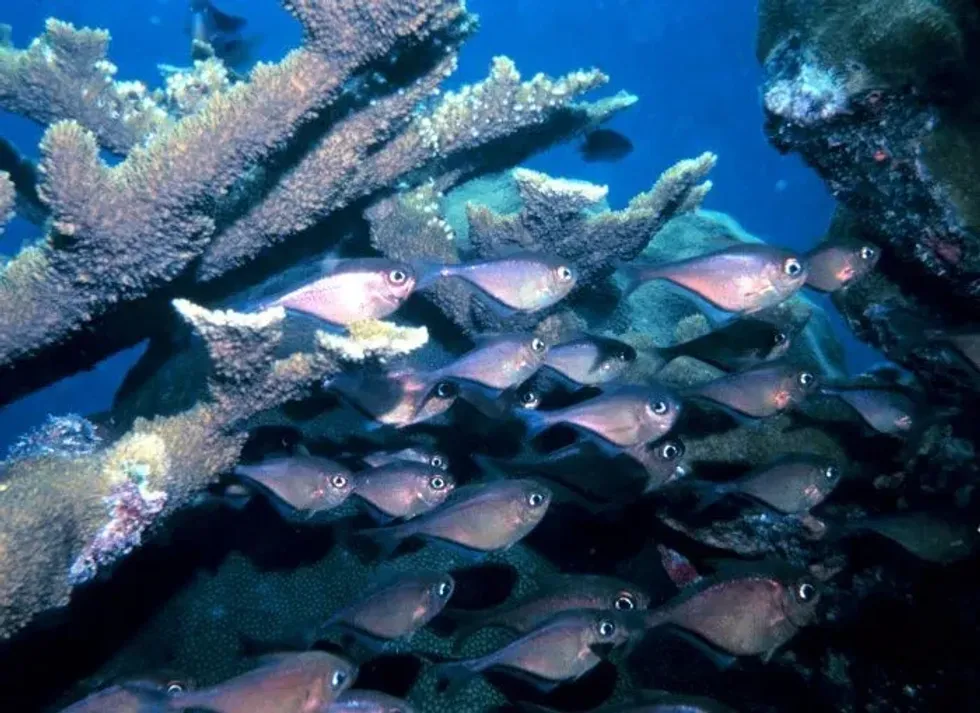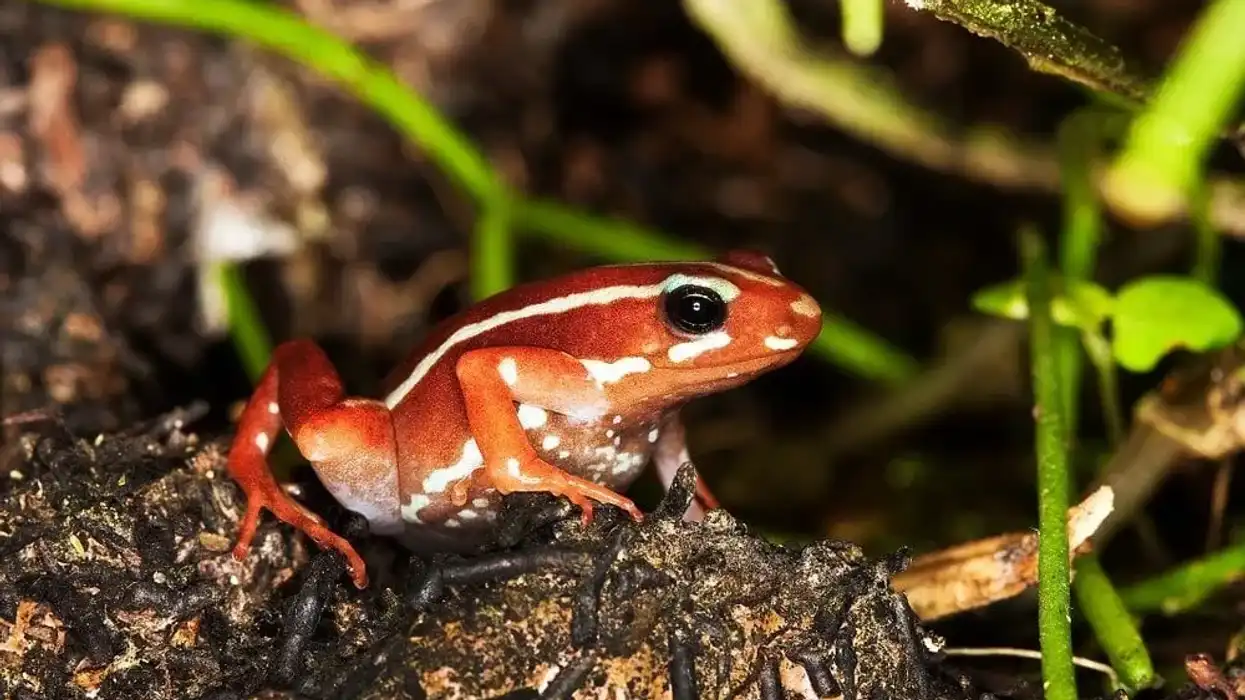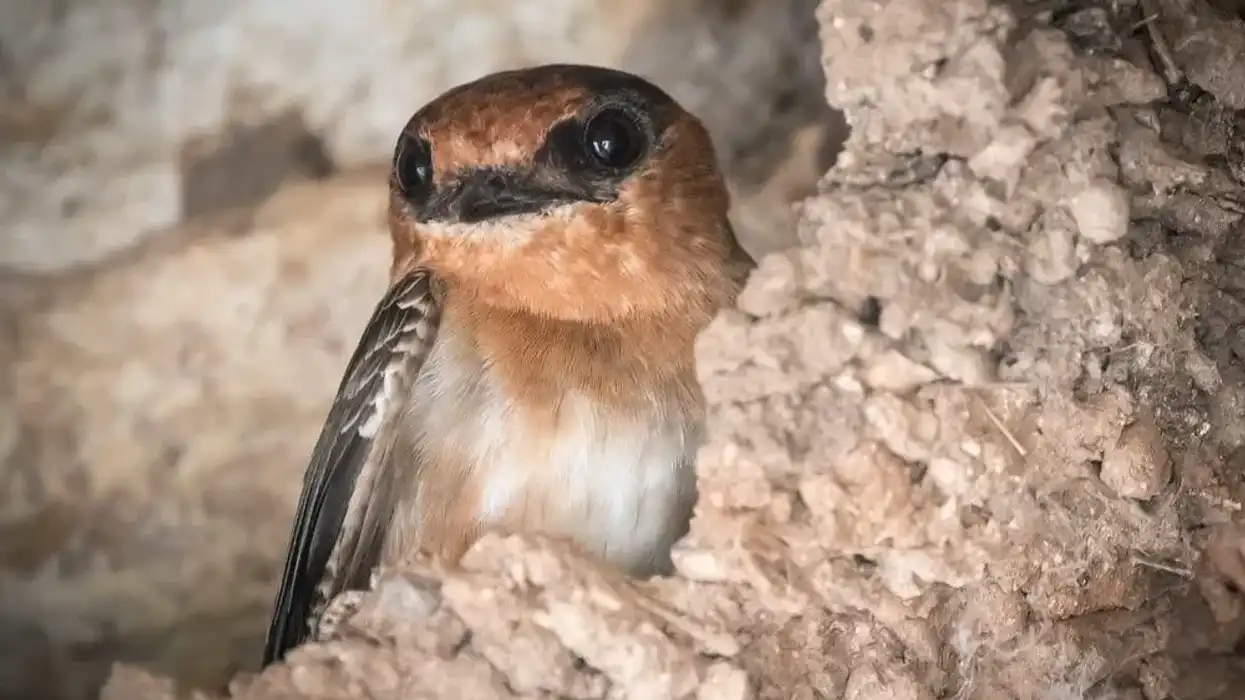The glassy sweeper (Pempheris schomburgkii), of the family Pempheridae, is a nocturnal fish species also known as the copper sweeper. The species Pempheris are small marine creatures and the glassy sweeper has a maximum body length of 6in (15 cm).
This fish species lives under the dark caves and coral reefs in shallow ocean levels, mostly occurring in the Caribbean Ocean, Indo-West Pacific Ocean, and Western Atlantic Ocean.
The glassy sweeper, or copper sweeper, has an oblique, thin body, large eyes, and a dark band on its anal fin. You will find these nocturnal species within large schools of fish - hiding during the day and foraging at night. They usually prey on smaller marine creatures, especially zooplankton.
If you enjoy reading this article about the glassy sweeper (Pempheris schomburgkii), you might also want to check out pin-tailed whydah facts and southern royal albatross facts.
Glassy Sweeper Interesting Facts
What type of animal is a Glassy Sweeper?
The glassy sweeper is a small fish that is part of the family Pempheridae, also known as sweepers. It is one of the 70 species in the genus Pempheris.
What class of animal does a Glassy Sweeper belong to?
The glassy sweeper is a kind of fish that usually preys on zooplankton. They are known to be one of the Caribbean reef species.
How many Glassy Sweepers are there in the world?
There is no official record of how many glassy sweepers exist but studies show that they are abundant across the globe with no possible threat of extinction.
Where does a Glassy Sweeper live?
Glassy sweepers (Pempheris schomburgkii) are small species that live in shallow tropical waters. They are abundant in the Caribbean, Pacific, Western Atlantic, and Indian Oceans.
What is a Glassy Sweeper's habitat?
Glassy sweepers (Pempheris schomburgkii) are mostly found in depths up to 100 ft (30 m). During the day, they hide under rocky caves, coral reefs, and dark crevices, and only swim out to open water at night. Some researchers have found them housing under shipwrecks too!
Who do Glassy Sweepers live with?
The glassy sweeper (Pempheris schomburgkii) lives in large schools of fish.
How long does a Glassy Sweeper live?
The glassy sweeper (Pempheris schomburgkii) is a poorly studied marine species. There is not much research done on its lifestyle and behavior. Although its longevity is still unknown, it is good to know that the average lifespan of a saltwater fish is 20 years.
How do they reproduce?
One of the few scientific observations of the species, Pempheris, was conducted in a laboratory by Müller and Troschel in 1999. The study found that the glassy sweeper (Pempheris schomburgkii) exhibits no pre-spawning activities and that the spawning of this species occurs every two to four nights.
Approximately 400-500 eggs are released and it roughly takes 30-40 hours to develop such eggs.
Another research was conducted by Koeda in 2012 in Okinawa, Japan. In his study, he mentioned that such night-time spawning of this sweeper fish is an adaptive habit to protect themselves, both adults and eggs, from predators.
He also states that the reproductive habits of the species Pempheris are dependent on varying environmental factors. Hence, the species in Japan may exhibit different mating patterns than the ones found around the Western Atlantic and Caribbean regions.
What is their conservation status?
The glassy sweeper (Pempheris schomburgkii) is currently declared as of Least Concern as the IUCN determines no major threat to this species and its population globally remains stable. However, a study conducted on a Caribbean island found that the population of glassy sweepers and other reef-associated species has greatly diminished over the years.
This is mainly due to mishandled fishing methods that did not only decrease the population of targeted fishes but also indirectly resulted in habitat loss of other species, including the glassy sweeper.
Glassy Sweeper Fun Facts
What do Glassy Sweepers look like?

The glassy sweeper (Pempheris schomburgkii) has a thin, oblong body, large eyes, and a very short snout. Its belly is deep and its head and mouth are oblique. It has a distinct dark band at the base of its anal fin and a deeply curved ventral profile in front of its pelvic fin.
How cute are they?
Depending on how much you like marine animals, glassy sweeper fish can be really cute. Seeing them swim in large schools with their tiny fins can be quite alluring!
How do they communicate?
There is no scientific information on the social behavior of the copper sweeper (glassy sweeper) species. Generally, fish communicate by exhibiting a variety of sounds, smells, coloration, motion, bioluminescence, and electrical impulses.
How big is a Glassy Sweeper?
Being a small fish, the length of the glassy sweeper (Pempheris schomburgkii) only measures up to 6in (15 cm). That is just about the size of a human palm!
How fast can a Glassy Sweeper swim?
The glassy sweeper cannot swim fast given its small fins. They would rather navigate through caves and coral reefs at a moderate speed.
How much does a Glassy Sweeper weigh?
The glassy sweeper is so thin and small that it only weighs up to 0.02-0.04 lbs (15-20 g). The females are said to get a bit heavier during the spawning season.
What are the male and female names of the species?
Like any other fish, there are no particular names for the male and female glassy sweepers.
What would you call a baby Glassy Sweeper?
There is no particular name for the baby glassy sweeper but a juvenile fish is generally called a fry.
What do they eat?
The glassy sweeper (Copper Sweeper) is a nocturnal species that only go out of their caves or ledges at night to find food. They forage on zooplankton, larval stages of invertebrates, and microorganisms from the skin of bigger marine animals.
Are they eaten by humans?
Despite its abundance and accessible habitat, the glassy sweeper (Pempheris schomburgkii) is not a popular food source for humans, probably because of its very thin body. When you see them in the local market, it is often the case that they were trapped in fishing nets and shrimp trawls.
One of the most common predators of the glassy sweeper is the red lionfish (Pterois Volitrans). The red lionfish is a newly introduced species that was found in abundance, especially in the north Caribbean region.
Would they make a good pet?
The glassy sweeper is also not popular in the fish pet trade. Not many people are interested to have this species at home.
However, studies show that a small group of glassy sweepers can be housed in medium to large aquariums with caves, coral-like structures, and wide swimming areas. It can be a very technical job because this species requires a low-light environment. Nonetheless, experts warn that it is best to leave them in their natural habitat.
Did you know...
Aside from being known as 'copper sweeper', there are many other names for the glassy sweeper such as blackspot sweeper, bronze sweeper, bullseyes, cave sweeper, hatchet fish, keeled bullseye, keeled sweeper, Oualan bullseye, Oualan sweeper, and silver sweeper!
Naming the Glassy Sweeper
From its name, the glassy sweeper (Pempheris schomburgkii) is glassy-eyed sweeper fish. Their eyes are huge, almost one-third the size of their body. 'Copper sweeper', is derived from its shiny color that is coppery red to olive.
Do Glassy Sweepers bite?
Like other fish, glassy sweepers do bite, especially on zooplankton, however, it is so small that it poses little to no harm to humans.
Here at Kidadl, we have carefully created lots of interesting family-friendly animal facts for everyone to discover! Learn more about some other fish including white crappie facts and lionfish facts.
You can even occupy yourself at home by coloring in one of our free printable Glassy Sweeper coloring pages.










